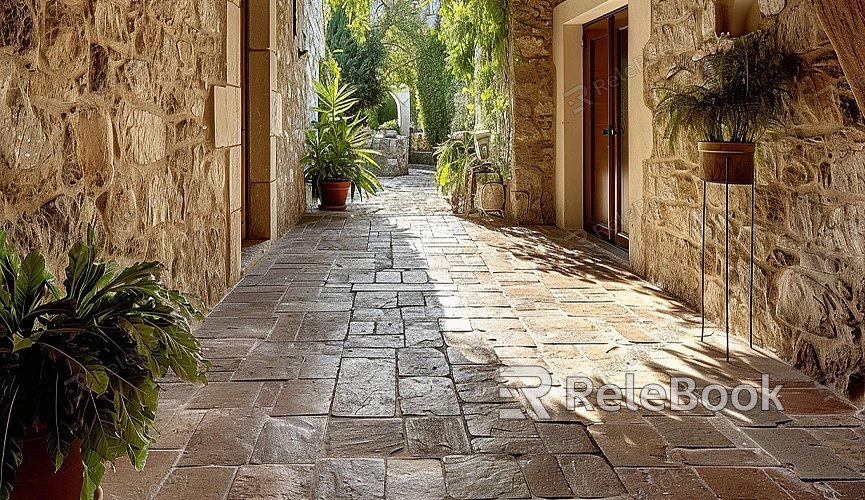Application of Cave Wall Texture
The rendering effect of cave wall texture in 3D model design and 3D scenes carries a primitive and mysterious atmosphere. Cave wall textures may include patterns, colors, cracks, and surface details resembling natural rock formations inside caves. This texture is used to create 3D models, game scenes, or virtual environments, providing projects with a sense of realism and a natural appearance. Today, let's briefly understand the common ways cave wall textures are used.

1. Selecting Cave Wall Texture: In design, choose cave wall textures that fit the scene's requirements, whether it's a rocky texture, ancient cave paintings, or limestone layers.
2. Preparing the 3D Scene: Set up your scene in Blender or other 3D modeling software, ensuring scene elements harmonize with the cave wall texture.
3. Importing Cave Wall Texture: Import the chosen cave wall texture into the project, ensuring image quality and resolution meet design standards.
4. Adjusting UV Mapping: Adjust UV mapping on scene elements to ensure accurate mapping of the cave wall texture to different parts.
5. Rendering and Lighting Effects: Adjust lighting effects in rendering settings and observe how the cave wall texture performs under different lighting conditions.
6. Adding Details and Shadow Effects: Use image editing software to add details to the cave wall texture, adjust shadow effects, enhancing the mysterious atmosphere.
7. Real-time Preview: In 3D modeling software, preview the cave wall texture effects in real-time, make adjustments to ensure harmony with the overall scene.
Common Applications of Rendered Cave Wall Texture Effects:
1. Game Scene Design: Use limestone layer cave wall textures to create a real and ancient atmosphere in cave scenes, enhancing the gaming experience.
2. Adventure Animation Backgrounds: Use rocky texture cave wall textures to design varied and more realistic scenes for adventure animation backgrounds, creating a thrilling experience.
3. Interior of Ancient Temples: Apply ancient cave painting textures to create a mysterious and sacred atmosphere inside ancient temples, attracting curiosity.
4. Scientific Archaeological Exhibits: Use limestone layer cave wall textures to present layered and historically rich effects in scientific archaeological exhibits, enhancing educational value.
5. Fantasy Novel Illustrations: Use rocky texture cave wall textures to add depth to cave scenes in fantasy novel illustrations, sparking readers' imagination.
6. Fantasy Movie Scenes: Apply ancient cave painting textures to inject ancient and mysterious visual elements into fantasy movie scenes, intensifying audience impact.
7. Museum Natural History Exhibits: Use rocky texture cave wall textures to provide a realistic feel to cave scenes in museum natural history exhibits, making visitors feel immersed.
8. Virtual Reality Cave Experiences: Use limestone layer cave wall textures to create a realistic and immersive environment for virtual reality cave experiences, increasing user engagement.
We can apply cave wall textures to 3D models through texture mapping, creating environments such as caves, caverns, and underground scenes in game design. Such textures contribute to rendering the ambiance of the scene. If you need high-quality 3D textures and HDRI or 3D model downloads, you can find them on Relebook. Simply download and import the textures and 3D models directly into your project.

